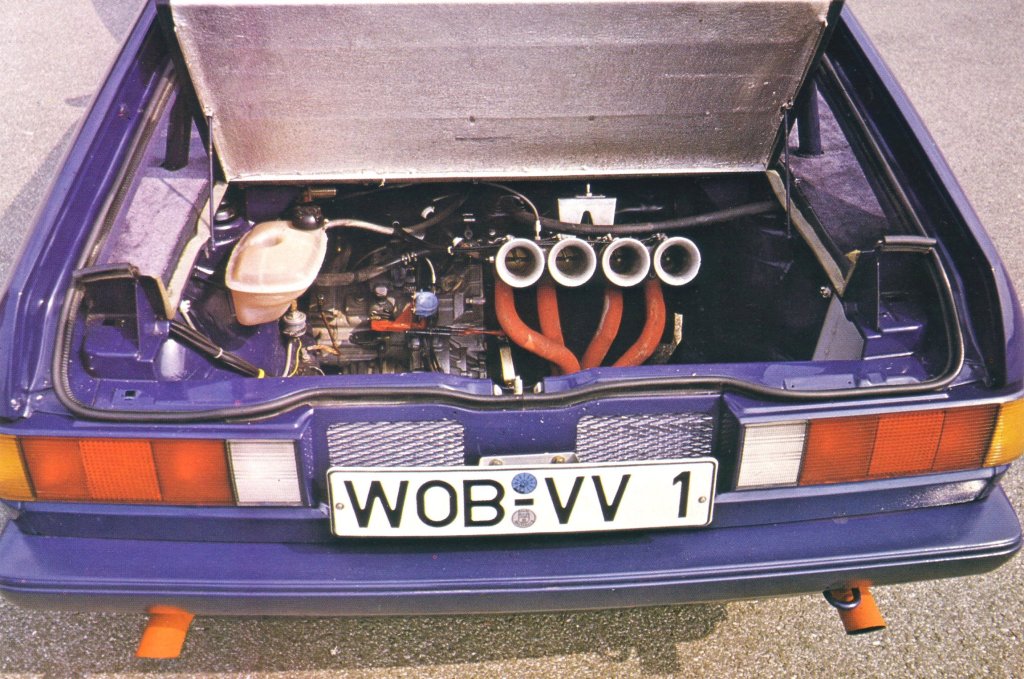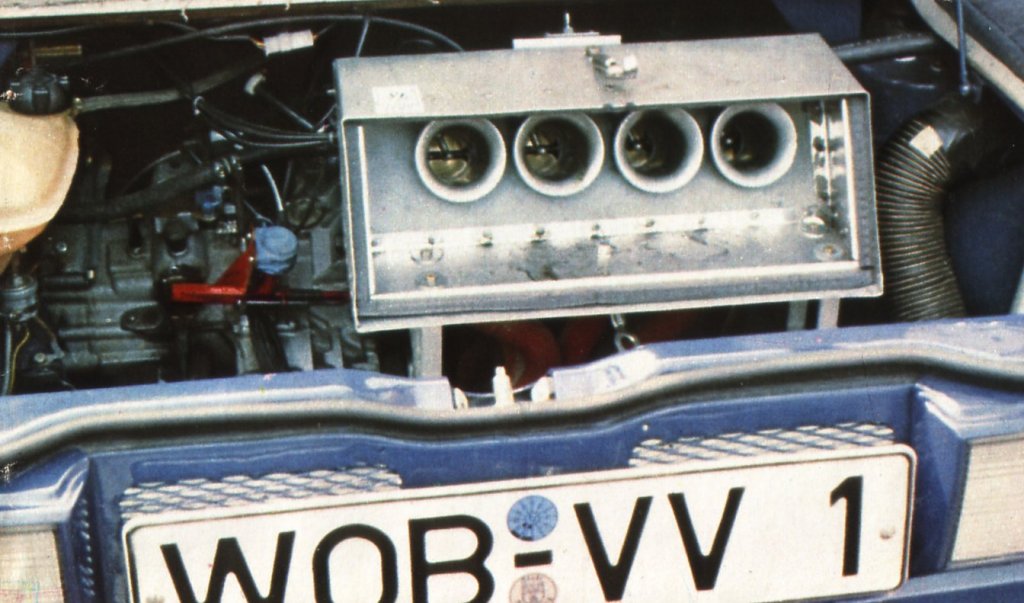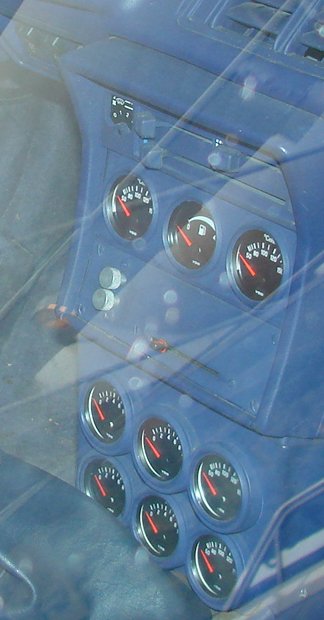Scirocco Bi-motor
360/4


Following on from the experimental 'Twin-Jet' Jetta, VW created the Bi-Motor Scirocco 360/4. The first prototype from 1983 was built by Kurt Bergmann and Klaus-Peter Rosorius of VW Motorsport. It featured two 1.8 litre four cylinder engines using Pierburg-Zenith fuel injection that were tuned by Eckhart Berg to produce 180 bhp each. These were mated to manual 5-speed gearboxes with hydraulic sintered clutches that transmitted power to all four wheels. Total power out put was 360 bhp from what could be considered a 3.6 litre 8 cylinder vehicle. The Scirocco 360/4 (360bhp/4wd) was capable of going from 0-60mph in 4.5 seconds and reaching a potential top speed of 180 mph. This must be the ultimate incarnation of the Mk2 Scirocco.
The 360/4 used an ingenious 'E-Gas' system to ensure both engines were synchronized when the throttle was pressed. The cable from the pedal went to the rear engine. A potentiometer was mounted on the rear throttle body to detect it's position and would send a signal to the front engine. By use of a slider control on the dash which operates a resistor, the power split between front and rear engines can be adjusted by the driver whilst in motion.

Special bodywork was created to accommodate the wide 7x15 Centra Type 6 alloy wheels. The car had U.S. style headlights, probably because it was based on an early Mk2 Scirocco GTI.

An interesting rear view of the 360/4 showing extra air intakes for cooling an breathing. Note also the twin exhausts that exit the car through the rear valance. The car originally carried 'Volkswagen' and 'Scirocco GTI' badges on the tailgate.

Due to the rear engine, the fuel tank and filler neck had to be re-located. The original filler flap was used as an intake for the induction system. There is also an underside deflector plate, visible forwards of the wheel.


On test in the UK for 'Motor' magazine.

Front engine bay. Note the mesh on the right bonnet vents, presumably for the throttle air intake. The twin radiators and fans are also clear to see in this shot. The coolant piping for the rear motor can be seen passing the timing belt cover. On the left side of the engine bay there is a servo for the hydraulic clutch, necessary on a twin engine vehicle.

Rear engine with the air filter housing removed.

And with it in place.

Full race seats with harness.


Interior access panel to the rear engine.

A special instrument cluster was used that had a rev counter for each engine and a central LED speedometer. The gauges in the centre console are again doubled for each engine.


The 360/4 gained extra gauges later in its development. The slide control, located where the radio would normally be, controls the front-to-rear engine power output split through the 'E-Gas' system.
The silver knobs to the left of the slider pneumatically disengage the front or rear gear linkages allowing for front wheel drive, rear wheel drive or four wheel drive. Knob V=Vorderseite (front). Knob H=Hintern/Heck (rear).
At the top left of the first pic you can see two rocker switches. These activate separate ignition circuits for each engine, allowing them to be started individually with the standard ignition key.

Underside views. On the left you can clearly see the custom made rear suspension. 4 piston brake calipers are fitted all around on 260mm vented discs. The handbrake is hydraulic.

This underside shot gives a good view of the fore and aft linkages to the two gearboxes from the gear lever.

The 7x15 Centra Type 6 alloys had VW Motorsport logos on the centre caps.

The 360/4 on display in the Wolfsburg museum (photo December 2007).




Click on the thumbnails above for a detailed cutaway pic, magazine features and advert.
For more information on the 360/4 Bi-motor Scirocco go to driversfound.com
Very special thanks to Chris Gaskell and Doug C for sending me the 360/4 photos.







